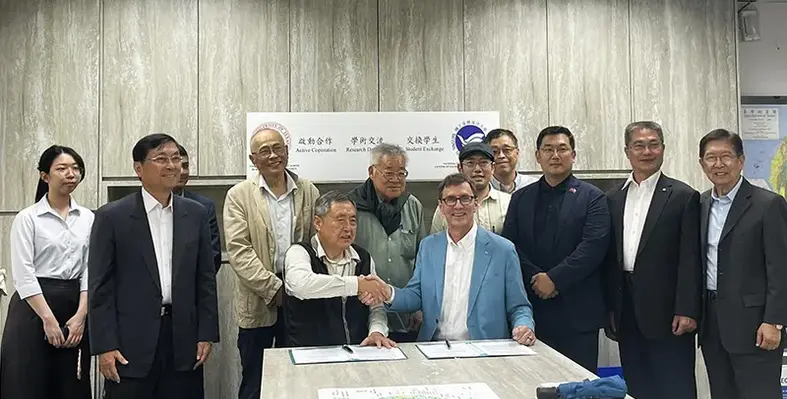
National Taiwan Ocean University (NTOU) and the University of Texas at Austin (UT Austin) signed an MOU to collaborate on geothermal research and accelerate the development of Taiwan's geothermal resources.
Raymond Greene, Director of the American Institute in Taiwan (AIT), emphasized the United States' readiness to support Taiwan with advanced energy solutions, including geothermal and nuclear energy, as well as cutting-edge grid technologies.
This collaboration, announced on April 23, involves NTOU Professors Chao-Shing Lee and Chung-Cheng Chang, alongside Dr. Ken Wisian from UT Austin, and aims to drive innovation and progress in geothermal energy development.
The development of green energy is an issue of global importance. According to the International Energy Agency (IEA), global geothermal capacity is expected to reach 800 GW by 2050. Earlier this year, Taiwan’s Bureau of Energy, under the Ministry of Economic Affairs, raised the national geothermal target for 2030 to a range of 1.2 to 1.5 GW. Taiwan possesses considerable geothermal resources, both onshore and offshore, from Taipei to Yilan. Additionally, the northeastern power grid already encompasses much of the geothermal potential region, making it an ideal area for energy transition.
Professor Chao-Shing Lee pointed out that Taiwan's geothermal industry is still in its infancy. He believes that international collaboration can help tap into deep geothermal resources that can serve as baseload power, playing a crucial role in Taiwan's energy transition. The partnership aims to create an innovative, enhanced, and socially responsible geothermal industry chain. This cooperation will involve technical exchanges, joint research, and co-development of geothermal resources. It is expected to not only advance geothermal development in Taiwan but also encourage innovation and research in geothermal technologies between the two institutions.
Dr. Ken Wisian highlighted several achievements from the Bureau of Economic Geology, such as their previous “Geothermal Anywhere” initiative and their progress in techno-economic modeling. This model, which incorporates more than 150 variables, assesses the technical and economic feasibility of geothermal projects, providing valuable insights for developers. He further stressed that geothermal energy can be used in ways beyond electricity generation, including direct applications and hybrid uses. Examples of such uses include agricultural product drying, greenhouses, and steam absorption chillers—applications already being explored in Texas, which could offer greater efficiency and economic suitability for local needs.
